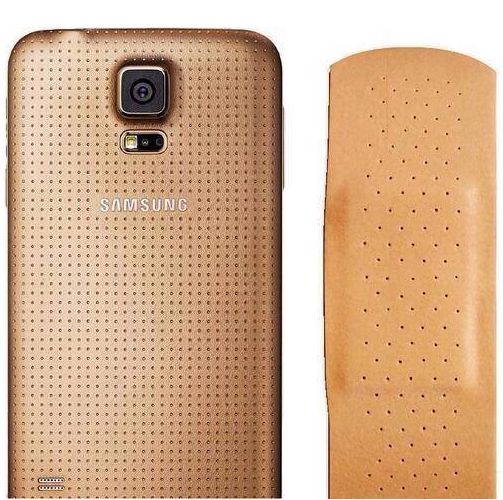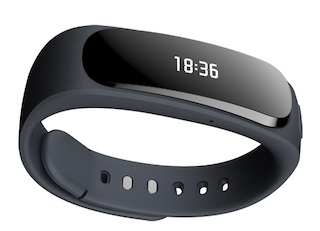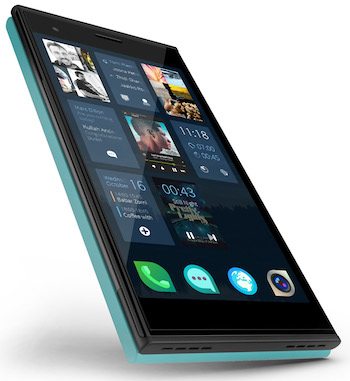This article is more than 1 year old
MWC: The good, the bad ... and the Galaxy S5
Six things we learned at global mobile show
4. Mid-market crush

The one on the left is a Samsung
The handset landscape looks much as it did at that the start of the year: a hellish place to be for any manufacturer that isn't Apple or Samsung. It's hopelessly over-saturated.
The conventional wisdom was that Samsung's Galaxy S5 will sell buckets, but will make less of a mark than the S4, which made less of a mark than the S3 - confirming the view that spending billions on flagships is a game for mugs. The great multicore and megahertz race is over, which offers a glimmer of hope for attractive mid-market handsets. That's where Sony (with its nice Compact) and HTC are going. The high end has simply run out of road.
MediaTek seems well placed to benefit from this - it reckons the $79 phone will do a lot more, while the $399 phone will do almost everything a $599 can do today.
Samsung's enormous marketing spend and ability to hit a range of price points tends to obscure the reality: that quality is variable (some Sammy kit is very good, but much is mediocre). Its own software is even more variable... while customers are more promiscuous than ever.
Given the progress that Huawei has made in just three years, particularly in design and advanced manufacturing, it will be a serious contender in three years - or may be even sooner. Samsung thinks its logistics and brand loyalty will fend of this competition. I'd ask Motorola and Nokia about that.
Nokia's last MWC as a handset company drew the largest on-floor crowd for the launch of its Android range, really for the novelty of it all. The novelty is that Nokia burned its (three) in-house platforms three years ago, but just launches a new one just as it's about to be swallowed by Microsoft. Few liked what they saw - but then these are phones that will be bought by Indians, Ukrainians (assuming it's still there next week), Argentinians and in the West, by teens aged 12-16 who have a Saturday job.
My hunch is that that market will enjoy the X range but that it's still too expensive. When I interviewed Nokia's Head of Mobile Phones I quoted him the £69 SIM-free street price for a Nokia Lumia 520 (made by another part of Nokia, Smart Devices). Who'd want an X when the 520, which is so much better, is about the same, or cheaper?
5. Wearables are still the Wild West

I had the following conversation with a very smart CEO-level exec last week. By CEO-level, I mean he is the divisional head at a huge company, which would be a large company anywhere else. It went like this.
"It's very human to monitor yourself and count your calories or footsteps," he told me.
"That's bollocks," I replied. "It's actually very human to avoid monitoring yourself. Unless you're in training or on a diet, or an eco-nutter measuring your carbon footprint, you don't. And it's more fun not to."
"It is," he said.
"It isn't," I replied.
This went on for a bit. I said people liked taking risks, and played games with risk all the time. And that was more human than counting.
"No it isn't," he said.
"Yes it is," I replied.
So I challenged him to give me an example that was "bigger than niche".
Well, he said, people wearing smart wearables could tell weeks in advance that they were going to have a heart attack.
No shit, Sherlock. You can tell years ahead if you're going to have a heart attack. Just put the parmo down, and go for a walk.
The point of relating this exchange is to show that the technology industry is still hoping that niche activities go mainstream. A slew more wearables were launched at the show, from Samsung, Sony and dozens of others - and they're all still niche. No doubt somebody will crack it - but it will by making something most people do most of the time a little more convenient. Probably at $99 and most likely at $49. We're no wiser to what this might be.
6. The little Linuxes may never come

There's always a flutter of excitement here when we report the progress of Mozilla, Ubuntu, or one of the other tiny platforms. Maybe it's the underdog factor - but don't we all wish these well? Alas, I'm sorry to report that all of these look like being solutions in search of a problem.
Jolla's Sailfish phone was the strangest of them all. It uses the Meego OS which Nokia abandoned, and has some excellent Nokia people on board. Meego looked like a contender two years ago - slick, easy to use and capable of running well on what today is a low spec device. But I simply can't understand what Jolla has done to it. Sailfish uses new gestures that are completely baffling. I worked my way through the Tutorial three times and still couldn't complete it. Jolla - please go back to the N9's swipes, no more and no less. Or this brave venture will not be around for MWC 2015. ®
